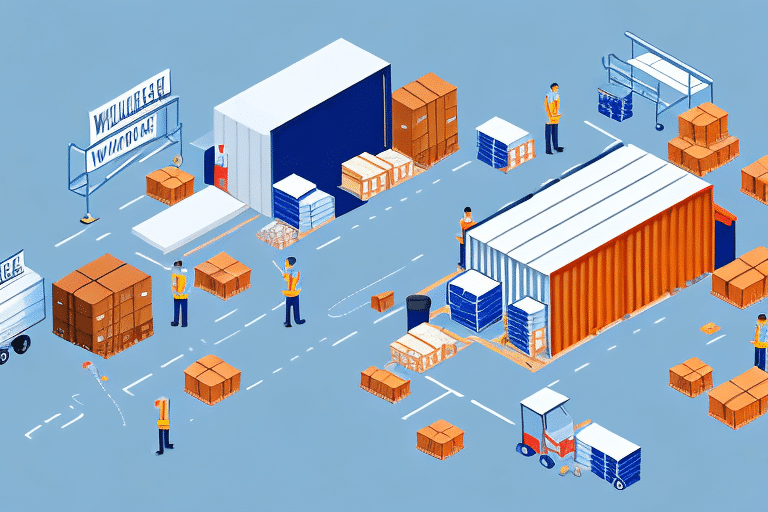The Importance of Fast Delivery in Ecommerce
The ecommerce industry has transformed the way consumers shop, offering unparalleled convenience and accessibility. In this competitive landscape, fast delivery times have become a critical differentiator. Customers expect to receive their purchases quickly, and businesses that can meet these expectations are more likely to thrive.
Understanding Customer Expectations
Customer expectations for delivery speeds vary based on factors such as location, product type, and urgency. For instance, same-day or next-day delivery is often expected for perishable goods, while a two-day timeframe may suffice for non-perishable items like clothing and electronics. According to a 2023 Statista report, 89% of online shoppers consider delivery speed a crucial factor in their purchase decisions.
Furthermore, the rise of ecommerce giants like Amazon has set new standards for delivery speed, pushing other businesses to adapt or risk losing market share. To stay competitive, understanding and meeting these evolving customer expectations is essential.
Optimizing the Supply Chain for Faster Delivery
Identifying Bottlenecks
The ecommerce supply chain encompasses multiple stages, each of which can introduce delays. Common bottlenecks include inefficient warehouse management, slow order processing, inadequate inventory control, and suboptimal transportation logistics. A comprehensive McKinsey study highlights that addressing these bottlenecks can reduce delivery times by up to 20%.
Streamlining Warehouse and Fulfillment Processes
Efficient warehouse operations are vital for speedy order fulfillment. Implementing advanced inventory management systems, optimizing warehouse layout, and utilizing automated picking and packing technologies can significantly enhance efficiency. For example, Forbes reports that automation can increase warehouse productivity by 30%, leading to faster delivery times.
Outsourcing Fulfillment to Third-Party Logistics Providers (3PLs)
Partnering with third-party logistics providers (3PLs) allows ecommerce businesses to leverage specialized expertise and infrastructure. 3PLs can offer scalable solutions, efficient transportation networks, and advanced technology, enabling faster and more reliable delivery. A Logistics Management article notes that businesses using 3PL services experience a 25% improvement in delivery speed.
Leveraging Technology and Automation
Role of Automation in Operations
Automation plays a pivotal role in enhancing operational efficiency. From automated order processing and inventory management to robotic warehouse systems, technology can minimize human error and accelerate workflows. According to TechRadar, businesses that adopt automation see a 40% reduction in order processing times.
Adopting a Data-Driven Approach
Data analytics enables businesses to make informed decisions that optimize operations. By analyzing sales trends, customer behavior, and inventory levels, companies can forecast demand more accurately and adjust their strategies accordingly. A report by datapine states that data-driven businesses are 23 times more likely to acquire customers and 19 times more likely to retain them.
Utilizing Predictive Analytics
Predictive analytics helps anticipate future demand and identify potential supply chain disruptions. By forecasting trends and consumer needs, businesses can proactively manage inventory and logistics, reducing delays. According to a SAS report, predictive analytics can improve inventory management accuracy by up to 50%.
Enhancing Delivery Tracking and Communication
Modern consumers expect transparency throughout the delivery process. Implementing real-time tracking systems and proactive communication tools can enhance the customer experience. For example, automated notifications about order status and delivery updates can reduce anxiety and improve satisfaction. A study by PwC found that 73% of customers are likely to return to a retailer that offers personalized and transparent communication.
Investing in Last-Mile Delivery Solutions
The last mile of delivery—the final leg from the distribution center to the customer’s doorstep—is often the most challenging and costly. Investing in innovative last-mile solutions such as autonomous delivery vehicles, drones, and local delivery partnerships can significantly enhance delivery speed and efficiency. According to a Business Insider article, drone deliveries can reduce last-mile delivery times by up to 70%
Balancing Speed, Cost, and Quality
Ensuring Product Quality
While speed is crucial, maintaining product quality is equally important. Efficient packaging, thorough quality checks, and reliable sourcing ensure that products reach customers in excellent condition. According to a Quality Magazine article, businesses that prioritize quality alongside speed see a 15% increase in customer satisfaction scores.
Balancing Cost and Speed
Optimizing for speed must be balanced with cost considerations. Faster delivery options often come at a higher expense, so businesses must evaluate the return on investment. Implementing cost-effective strategies such as optimizing delivery routes and leveraging bulk shipping can help balance speed and cost. A Harvard Business Review piece suggests that strategic investments in supply chain efficiency can reduce delivery costs by up to 20% while maintaining speed.
Case Study: Amazon's One-Day Delivery Implementation
In 2022, Amazon expanded its one-day delivery service to over 100 new cities globally. This initiative was part of their ongoing strategy to enhance customer satisfaction and stay ahead in the competitive ecommerce market. By investing in a comprehensive logistics network, including fulfillment centers, advanced automation, and a robust last-mile delivery system, Amazon successfully reduced delivery times and increased customer loyalty. According to Amazon’s annual report, this expansion contributed to a 15% increase in Prime memberships and a 10% boost in overall sales.
Conclusion
Optimizing ecommerce operations for faster delivery times is imperative for staying competitive and meeting ever-increasing customer expectations. By understanding customer needs, streamlining the supply chain, leveraging technology and automation, and investing in innovative delivery solutions, businesses can achieve significant improvements in delivery speed and efficiency. Balancing these efforts with cost and quality considerations ensures sustainable growth and enhanced profitability. As the ecommerce landscape continues to evolve, businesses that prioritize fast, reliable delivery will be well-positioned for success.






















